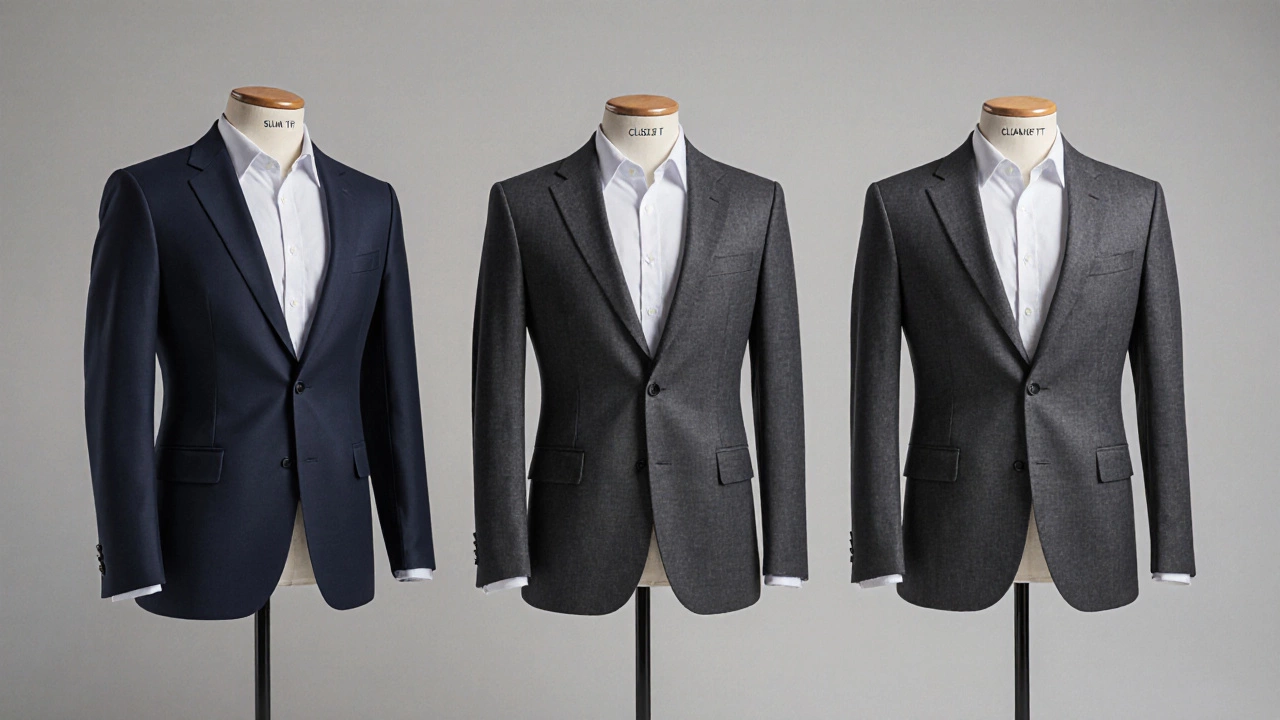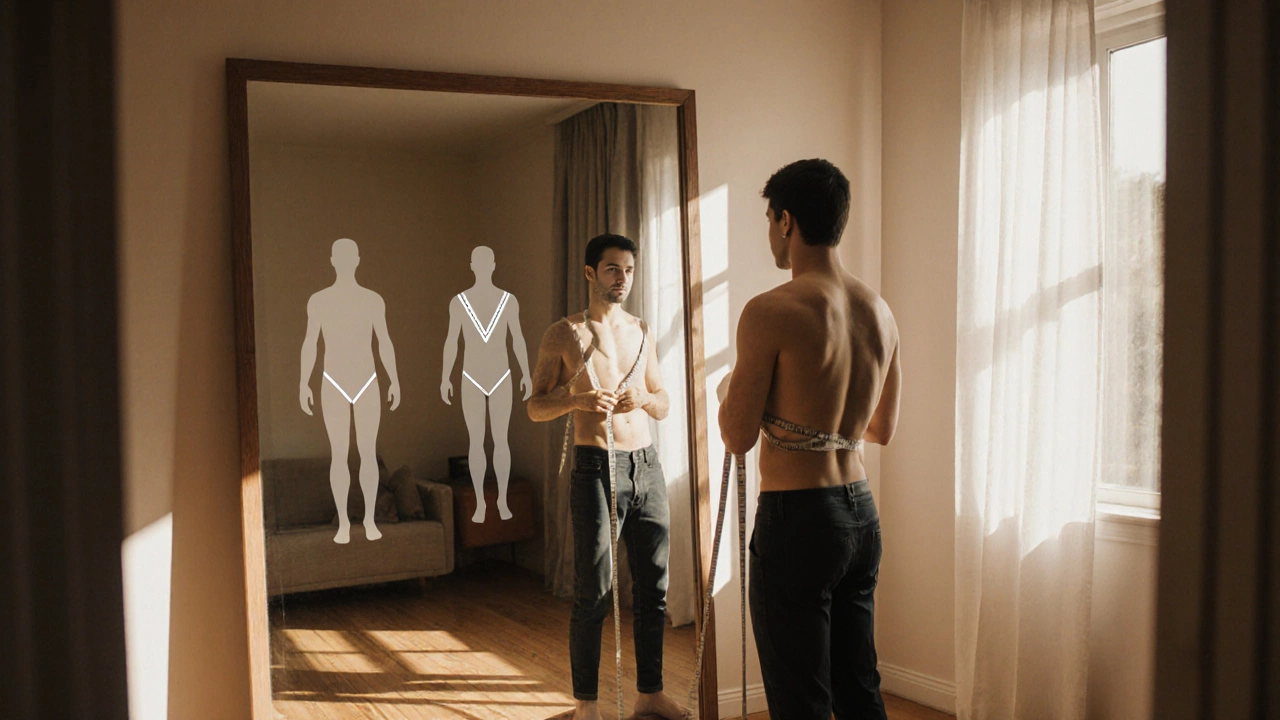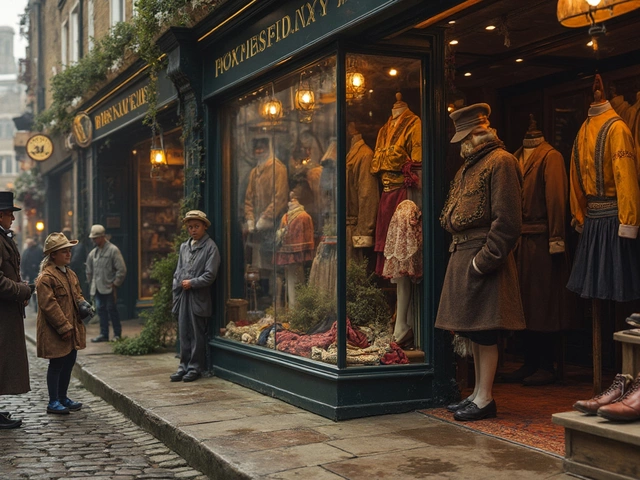Suit Fit Calculator
Identify Your Body Shape
Key Measurements
Style Preferences
Your Recommended Suit Fit
Finding a suit that actually flatters you feels like hunting for a needle in a haystack, especially with so many cuts, fabrics, and fit myths out there. The good news? You don’t need a fashion degree to look sharp. By mastering a handful of fundamentals-your body shape, key measurements, cut choice, and where to buy-you can walk into any room with confidence.
Know Your Body Shape
Body shape is the foundation of every suit decision. It describes the proportion of your shoulders, chest, waist, and hips, and tells you which silhouette will balance your frame. The three most common profiles for men are:
- Rectangle: shoulders and waist are roughly the same width. You’ll want visual contrast to add dimension.
- Triangle (or inverted V): broad shoulders tapering to a narrower waist. Emphasize the waist to keep the look tidy.
- Oval: a fuller midsection with less definition at the shoulders. Streamlined cuts work best.
Identifying which category you fall into is as simple as standing sideways in front of a mirror and noting where your shoulders, chest, and waist differ. Once you have that snapshot, the rest of the process becomes far more intuitive.
Take the Right Measurements
Suit measurements are the numbers that tell a tailor-or a ready‑to‑wear brand-how a jacket should sit on your body. The five you can’t skip are:
- Chest: measure around the fullest part, keeping the tape level.
- Shoulder seam: the distance from one shoulder point to the other, following the natural curve.
- Waist: where your jacket will taper; usually 2‑3 inches below the natural waist.
- Sleeve length: start at the shoulder seam and run down to where your wrist meets your hand.
- Jacket length: from the base of the neck to the desired hem-generally covering the rear of the seat.
Having these numbers on hand not only speeds up a fitting appointment but also protects you from size‑guessing pitfalls common in department stores.
Pick the Right Suit Cut
Three classic cuts dominate the market today, each catering to a different body profile. The table below breaks down the core attributes:
| Cut | Silhouette | Best For | Key Feature |
|---|---|---|---|
| Slim Fit | Close‑to‑body | Rectangle, Triangle | Narrow lapels, tapered waist |
| Tailored Fit | Moderate taper | All shapes | Balanced shoulders, relaxed waist |
| Classic Fit | Roomier | Oval, larger builds | Generous chest, straight cut |
If you have a rectangle shape, the slim fit adds visual width with sharp lapels. For a triangle, the tailored fit keeps the shoulders crisp while allowing a clean waist break. And if you carry extra weight around the midsection, the classic fit offers the breathing room you need without looking baggy.

Lapels, Jacket Length, and Button Stance
These style details are more than just aesthetics; they can subtly reshape your silhouette.
- Lapel width: 2.5‑3.5 inches is a safe range for 2025. Narrow lapels lengthen the torso, while wide lapels broaden the shoulders.
- Jacket length: a modern look ends just above the hips, covering the rear seat. Longer jackets (full‑length) work for formal events but can shorten your appearance if you’re short.
- Button stance: a single‑breasted, two‑button jacket with the top button positioned 6‑7 inches below the collar is universally flattering. If you’re over 6'2", a three‑button style adds proportion.
These cues work together: a narrow lapel with a slightly longer jacket can balance a tall frame, while a wider lapel paired with a shorter hem adds bulk to a slimmer build.
Fabric, Color, and Pattern Basics
Fabric choice impacts comfort, drape, and seasonality. The most versatile options are:
- Wool: breathable, holds shape, works year‑round.
- Worsted: a tighter weave, ideal for business settings.
- Linen: light and airy, best for summer but prone to wrinkling.
When it comes to color, navy, charcoal, and deep gray dominate professional wardrobes because they pair with virtually any shirt and tie. A subtle pinstripe adds visual height-great for taller men-while a micro‑check can break up a bulky silhouette for broader shoulders.
Always test a fabric’s weight by feeling the cloth; a good suit drapes without feeling stiff, yet it should have enough body to maintain its shape after a day of wear.
Off‑the‑Rack vs. Made‑to‑Measure vs. Bespoke
Tailor is the gatekeeper of a perfect fit. Here’s how each buying route stacks up:
- Off‑the‑rack: Quick, often cheaper, but you’ll likely need at least one alteration (sleeve or trouser length).
- Made‑to‑measure: Starts from a base pattern adjusted to your measurements; offers a middle ground of cost and personalization.
- Bespoke: Hand‑crafted from scratch; the ultimate fit but comes with a premium price tag and longer lead time.
If you’re on a budget but still want a customized feel, many mid‑range retailers now provide in‑store fitting services that combine off‑the‑rack convenience with minor alteration work. A simple sleeve shorten or take‑in at the waist can transform a generic jacket into a personal masterpiece.

Final Fitting Checklist
Before you leave the shop-or before you press “order” online-run through this quick audit:
- Shoulder seams end exactly at your natural shoulder point.
- Jacket buttoning leaves a small gap (about ¼ inch) between the button and buttonhole.
- Sleeve shows about ½ inch of shirt cuff.
- Trousers sit at your natural waist with a slight break at the shoe.
- Lapel lies flat against the chest-not puckered.
If anything feels off, note it and ask your tailor for a precise adjustment. Remember, a well‑fitted suit feels like a second skin, not a constricting uniform.
Quick Takeaway Checklist
- Identify your body shape-rectangle, triangle, or oval.
- Record the five essential measurements.
- Choose a cut (slim, tailored, classic) that matches your shape.
- Pick lapel width, jacket length, and button stance that flatter you.
- Select a versatile fabric (wool or worsted) and a timeless color.
- Decide between off‑the‑rack, made‑to‑measure, or bespoke based on budget.
- Use the final fitting checklist to confirm the perfect fit.
Frequently Asked Questions
How often should I get my suit altered?
Most men need a minor alteration after the first wear-usually a sleeve shorten or trouser take‑in. After that, a full adjustment is only needed if you gain/lose significant weight or change your posture.
Is a navy suit more versatile than a charcoal one?
Navy pairs easily with both light and dark shirts, making it ideal for daytime and evening events. Charcoal leans more formal and works best with white or light‑blue shirts. Choose navy for everyday wear and charcoal for business‑formal occasions.
Can I wear a slim‑fit suit if I’m 6'4"?
Yes, but pay attention to jacket length and sleeve proportion. A tall man should look for a "long" or "tall" variant of slim‑fit, which adds extra fabric to the torso and sleeves while keeping the sleek silhouette.
What’s the difference between a single‑breasted and double‑breasted jacket?
A single‑breasted jacket has one column of buttons and is more versatile; a double‑breasted jacket has two columns and creates a broader chest appearance, which can help balance a narrower frame.
How do I choose between wool and worsted fabric?
Wool offers more texture and breathability, ideal for varied climates. Worsted is smoother and holds a sharper line, perfect for formal office settings where a crisp look matters.





